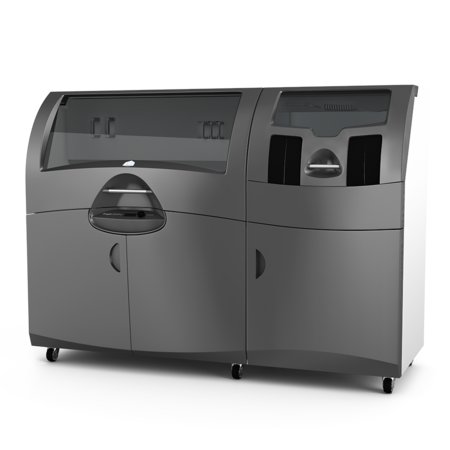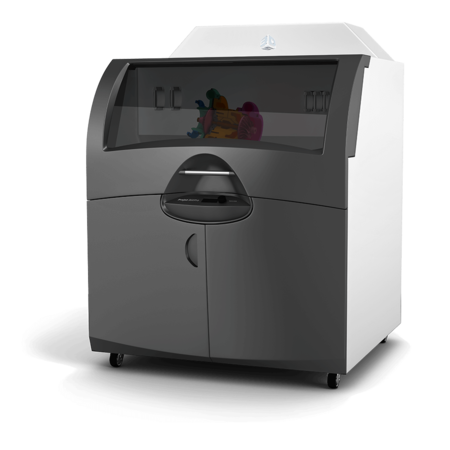"As vivid as a 3D CAD model is, it just doesn't tell you as much as a physical model can about what will come off the production line. We're making more money by creating prototypes for our sales force, giving them something concrete and convincing to show major auto companies and private-label customers." – Matt Lamb, Tire Designer, Continental Tire
If you drive, ride, or bike, chances are good you are rolling on “Conti” tires. Continental Tire the Americas, LLC is a group of the Germany-based Continental Corp., which is the number-one tire maker in its home country, number two in Europe, and number four worldwide. The products are sold under a host of different brands, including Continental, General Tire and Uniroyal in Europe.
At first glance, tires are just tires, but a surprising amount of thought goes into every line of Continentals. What kind of vehicle is it going under? What is the focus? Stopping power? Fuel economy? Performance? And of course, what should the tread look like?
Tread design is where the rubber meets the road in tire making. It is equal parts engineering and aesthetics, and designers need prototypes on demand to drive good group decisions. Early in development, tire designers take input from marketers and engineers who separately lay out requirements for each new line of tires. Designers synthesize the input and come up with dozens of potential tread designs. Every zig, zag, groove and gap has a specific purpose and had better have eye appeal. “Looks aren’t everything, but everyone wants a cool-looking tire,” says Matt Lamb, a Continental tire designer based in Ft. Mill, S.C.
Challenge
Quickly Generating Numerous Tread Samples
From dozens of initial concept drawings, designers develop half a dozen into full-fledged three-dimensional computer-aided design (CAD) models. Although tires may seem like simple things, they’re very complex to design. They’re a torus shape – that is, they have a curved circumference and curves in the cross section. To simplify and accelerate design work, Continental developed proprietary modeling software called TireWizard that operates on top of its 3D CAD software.
Years ago, Continental recognized the value of turning the CAD models on their computer screens into rapid physical prototypes that employees could hold in their hands while evaluating design alternatives. “As vivid as a 3D CAD model is, it just doesn’t tell you as much as a physical model can about what will come off the production line,” says Lamb.
Solution
3D Printing
Continental invested at that time in a Fused Deposition Modeling (FDM) 3D printer. As advertised, it created 3D prototypes. Whether they were rapid prototypes was open to interpretation. Every printing job took 50 hours or more.
Frustrated with the slow printing action, Continental decommissioned the machine and evaluated alternatives for upgrading. Speed, of course, was the main consideration. Continental tire designers needed a fast machine that could churn out prototypes without a lot of wasted time and effort. After months of evaluation, Continental representatives determined that the ProJet®CJP full-color 3D printer was the fastest 3D printer on the market, as well as the most affordable to purchase, operate and maintain.
Results
Speed And Efficiency Up, Cost Down
Continental is delighted with its investment. The ProJet prints 10 x 5-inch (254 x 127 mm) tread samples in five hours versus the 50 hours the FDM machine consumed. The time savings becomes exponential when Continental opts to print three different samples at once, which was impractical with the FDM machine.
In addition to being faster, the ProJet operates at less than half the cost of the company’s decommissioned printer. A tread sample costs $100 in materials versus upwards of $200 for a sample from the FDM printer.
Another dramatic difference between the two devices is the Projet CJP's surprisingly low maintenance requirements. To create a prototype, the FDM device squirted a glue-like substance from a small nozzle that would regularly clog. Even worse, it would then harden. Lamb and his colleagues had to regularly dismantle, clean, reassemble and recalibrate the machine – a task that was clearly beyond the scope of routine maintenance.
The ProJet’s speed and negligible maintenance requirements have created time for Lamb’s division to accomplish more work in the same amount of time, including printing models for a commercial tire group in Illinois that remotely downloads 3D files to the 3D printer in Ft. Mill.
“We’re extremely satisfied with the ProJet because it’s fast,” Lamb said. “We spend more time designing and less time making prototypes and fixing machines we never expected to break. We now have more flexibility in the design cycle to develop, discuss, debate and refine tread designs that will ultimately best satisfy our customers.
In addition to our purchase and material savings, we’re making more money by creating prototypes for our sales force, giving them something concrete and convincing to show major auto companies and private-label customers. This process was just too much work in the past, but it’s a great advantage for us since our competitors have only sketches to show. Thanks to the ProJet, everything here at Conti is rolling along smoothly.”

